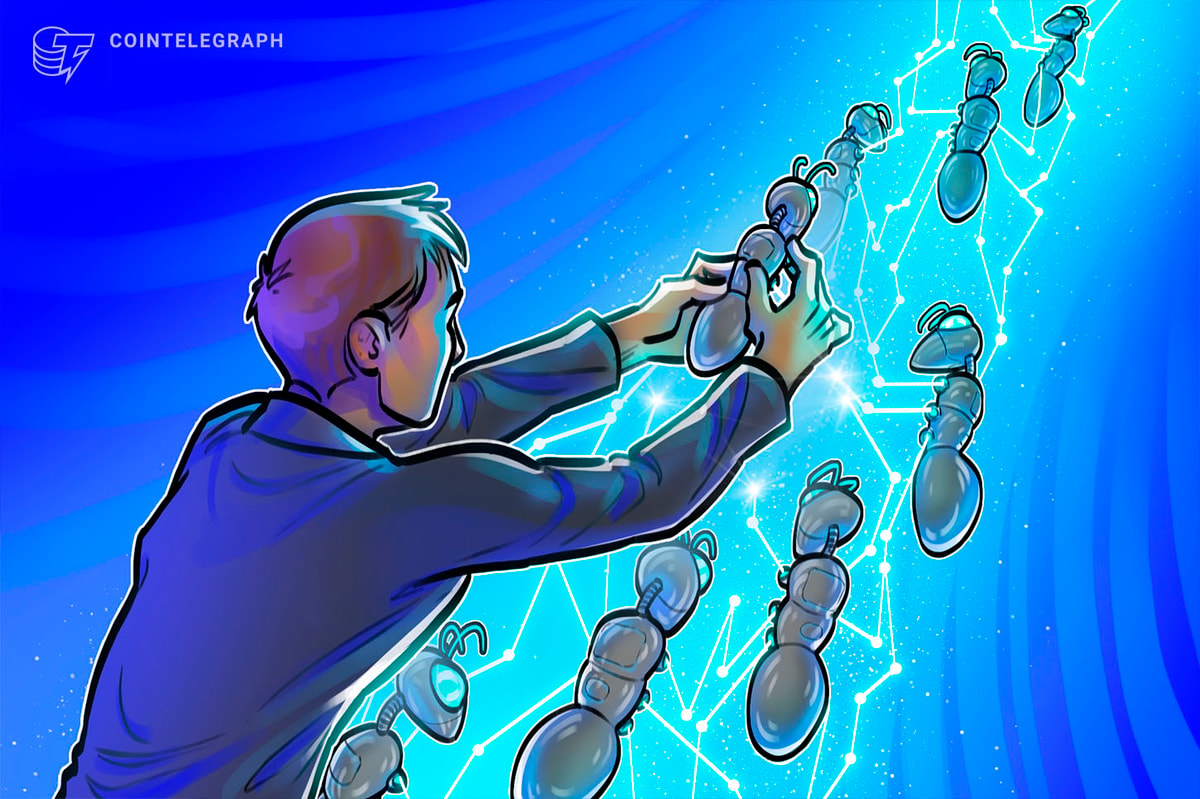By Cyrus John: Dark clouds are looming over top tech companies as Silicon Valley behemoths have been hit with mass layoffs. Twitter, Meta, Apple, Amazon and even Netflix have sent pink slips to thousands of employees. This has been the worst phase that Web2 companies have seen over the past few years and it’s getting worse. Even retail giant Amazon is struggling to sustain some of its businesses in India and plans to shut them down next year! It’s all collapsing like a house of cards and Alan Walker’s ‘All Falls Down’ is reverberating on a loop in my consciousness.
What I say may come across as foofaraw but this is serious. Innovation seems to have saturated in Web2 with run-off-the-mill products and services being churned out which, quite frankly, have begun to pinch the eyes. While ‘over-hiring’ during the pandemic seems to be the wrecker in chief in most cases, these tech giants are not able to sustain a profit-making model with the current workforce especially when consumption has dipped because of inflation and the economic turmoil.
Seemingly, it’s not been as hunky-dory for Web3 as well, with most start-ups and companies struggling for funding and mass adoption. The beleaguered crypto market has exposed some of the chicks in future technologies and that’s affected the overall sentiment of the industry.
Lay-offs, FTX, recession and death of Cartoon Network. It’s been the worst year.
The Dreaded Dichotomy
While some experts are trying to draw parallels between the two, Web3 is working on establishing its own distinct identity and trying its best to circumvent the fallout due to the Web2 slump. Despite the crypto backlash, Web3 startups have been recipients of intermittent investments that have kept the wheel in motion. So, is it finally time for Web3 to shine?
Realise that this isn’t a battle to reign supreme. Web3 is not here to compete or replace Web2. They’re good friends and I think they can be like the Jai and Veeru of the ‘Ramgarh’ Metaverse.
Sharat Chandra, who is the co-founder of the Indian Blockchain Forum and an influential voice in the Web3 space in India, believes that a “healthy co-existence of Web2 and Web3 models is necessary to reap the benefits of centralisation and decentralised business models.” I agree! At least for the next decade, both technologies will have to co-exist and assist one another for the greater good.
As the fate of Web2 companies hangs by a thread due to global macroeconomic headwinds, these firms have realised that they need to embrace future technologies to sustain themselves in the long run.
To get the masses interested in Web3, I feel we need more Web3 products and services that intrigue consumers and directly impact them. Like the blockchain phone from Solana.
Poorvi Sachar from Tezos India echoes that sentiment and believes “companies should focus on more real-world applications for Web3 companies and builders should create projects and protocols while the Web2 market is down.” Therefore, this is the perfect time to build and risk a little by investing in emerging technologies.
Meta (Facebook before), which is one of the biggest tech companies working on Metaverse tech has poured billions of dollars to create the Metaverse and the internet of tomorrow. However, the lack of real-world consumer-centric technologies and applications has forced the company to rethink its plans for future tech. Mark still hasn’t given up on his ‘Meta’ dream and understands that innovation needs to happen at a pace that doesn’t compromise the future of his company.
New-age Web3 developers are mushrooming across the globe and in the current job market, this would be a good time to cherry-pick some of the best talents you can find out there.
Web2 will find ways to recover over the next few months (if the economy stabilises) since it already has an established market but Web3 needs to be a bit more aggressive with its approach towards expanding. But like I said before, growth should not be at the cost of customers’ money.
A Conscientious Approach
A report I read a few days back, highlighted that investments in Web3 technologies may have dropped substantially over the past few months but remains to be a point of interest for venture capitalists. Compared to biotech and fintech, Web3 technologies continue to receive a majority of the funding and that is a good sign for people working and building in this space.
However, it is the responsibility of investors, developers and various stakeholders to identify sustainable business models and keep away from chains and projects that do not offer scalability, security and have a short-term growth strategy. Invest in the fundamentals; that’s key. The pursuit of quick cash and short-term growth in this space has never ended well.
Web2 will find ways to recover. Twitter will be back on its feet in no time as Elon is going to want returns on his $44 billion in quick time. Companies like Meta may alter their approach towards developing Metaverse technologies and adopt a more sustainable model. Amazon will shut shop on some of its businesses across the globe to save costs. You may get to see more layoffs in the tech space in the next few months but things will get better in the long run. Think of this as the system cleansing itself.
Remember when the internet bubble popped in the 1990s? Boy, that was a mess. Most companies which survived that phase had a sustainable business model and weren’t pegged to short-term profits. Today, these are some of the biggest names in tech like Amazon and Microsoft.
A similar approach is necessary when you’re looking to build the future of the internet. While many see Web3 as the next big thing, it’s undeniable that the current iteration of the internet, i.e. Web2, will have a major role to play even in the next 10-15 years.
The Challenges Ahead
Being a Christian, I am taking a big risk writing this: Humans, as beautiful as they are, are products of evolution. Yes, we have evolved from monkeys. A process that took billions of years. The lesson here is all good things take time(and not all humans are good).
Every successful invention or technology is a by-product of rigorous testing and countless hours of research and development. While Web2’s objective now is to focus its resources on staying relevant and innovating further, Web3 has to focus on innovating and prioritising large-scale adoption. People need to be patient with the process and simultaneously this needs to be achieved without any compromises.
We cannot let ourselves be consumed by the hate for people like Sam Bankman-Fried (the FTX guy) or let events like the crypto market collapse affect our long-term objectives. Undeniably, these events have dealt a major blow to consumer sentiment but we need to look at the bigger picture.
Even in a growing market in India, Web3 companies and start-ups are getting into the stride and focusing on developing consumer-centric technologies. India has more than 450 Web3 start-ups and this number is sure to grow.
However, there have been certain challenges that seem to be stifling growth. Prayag Singh who is the co-founder of a decentralised social media platform called SOCLLY believes that many Web3 companies are looking to relocate outside of India due to the lack of a regulatory framework and clarity around crypto here. Not to mention the burden of high taxes imposed. This needs to change!
With a competitive talent pool, a high adoption rate, and the development of products for the global market, India can emerge as a global player in Web3. The regulatory framework and taxation policies for Web3, blockchain, cryptocurrency and other emerging tech need to be more conducive for businesses to set up here in India. Various stakeholders also need to educate the masses about these technologies so that a single ‘crypto’ narrative doesn’t pervade peoples’ minds.
Ironically, Web3’s path to success can only be achieved by leveraging Web2. At the moment, there seems to be a little friction between the two but I believe things will get better after the dust settles around the whole crypto debacle. Till then, stay curious and keep believing in Web3.
Read More: news.google.com









 Bitcoin
Bitcoin  Ethereum
Ethereum  Tether
Tether  XRP
XRP  Solana
Solana  USDC
USDC  Dogecoin
Dogecoin  TRON
TRON  Cardano
Cardano  Lido Staked Ether
Lido Staked Ether  Wrapped Bitcoin
Wrapped Bitcoin  Hyperliquid
Hyperliquid  Wrapped stETH
Wrapped stETH  Sui
Sui  Chainlink
Chainlink  Avalanche
Avalanche  Stellar
Stellar  LEO Token
LEO Token  Bitcoin Cash
Bitcoin Cash  Toncoin
Toncoin  Shiba Inu
Shiba Inu  Hedera
Hedera  USDS
USDS  WETH
WETH  Litecoin
Litecoin  Wrapped eETH
Wrapped eETH  Monero
Monero  Polkadot
Polkadot  Binance Bridged USDT (BNB Smart Chain)
Binance Bridged USDT (BNB Smart Chain)  Ethena USDe
Ethena USDe  Bitget Token
Bitget Token  Pepe
Pepe  Pi Network
Pi Network  Coinbase Wrapped BTC
Coinbase Wrapped BTC  WhiteBIT Coin
WhiteBIT Coin  Aave
Aave  Uniswap
Uniswap  Dai
Dai  Bittensor
Bittensor  Ethena Staked USDe
Ethena Staked USDe  Aptos
Aptos  NEAR Protocol
NEAR Protocol  Cronos
Cronos  OKB
OKB  BlackRock USD Institutional Digital Liquidity Fund
BlackRock USD Institutional Digital Liquidity Fund  Internet Computer
Internet Computer  Jito Staked SOL
Jito Staked SOL  Ondo
Ondo  Ethereum Classic
Ethereum Classic